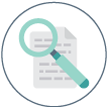To stay competitive, businesses must leverage data analytics for strategic decisions. But the lack of clean, accurate data leads to suspect analytics and misguided decisions. The emergence of additional disrupters in the data space, including AI, further underscores the importance of data quality. These best practices for data quality checks help keep you ahead of the curve.
Data quality plays an essential role in strategic analytics. And AI requires a large amount of high-quality data to train the large language models (LLM) that are essential to AI systems. When determining data quality, organizations need to address several factors, including:
- Completeness – Identify any gaps or missing elements. For instance, this could include verifying that all vendor records include critical information such as valid phone numbers.
- Uniqueness – On the flip side, duplicate data will also result in skewed results. Data teams must identify and resolve duplicates regularly.
- Validity – Ensure that data conforms to predefined standards such as rules around expected format or data type. For example, check to make certain that email addresses use a valid format.
- Timeliness – Outdated information will result in faulty strategies. For instance, using old sensor data can lead technicians to create ineffectual equipment maintenance strategies.
- Accuracy – Does data reflect real world values? For example, do location-based services use accurate GPS coordinates?
- Consistency – Data teams need to compare and verify data from various sources and systems to ensure coherence. For instance, check for consistent use of product names.
Several key strategies will help streamline data quality checks and ensure that you have the data you need to guide business direction.
Implement Strategic Data Governance
Data quality does not happen by chance. It requires a robust data governance framework that includes clearly defined policies, procedures, and responsibilities. These policies outline data lifecycle management, provide for data security, and ensure regulatory compliance.
With effective data governance, companies gain visibility into all their data, no matter where it lives. They classify data, tying retention and destruction policies, as well as sharing restrictions and encryption rules, to data type. They also enhance data security by strengthening identity and access management, balancing access with security.

An essential element of data governance involves data lineage, a type of metadata that traces the movement of data throughout the organization. This “data about data” tells where the data originated, how it has been used, and how it has transformed throughout its lifecycle.
By illuminating milestones along the data journey, data lineage helps the data team determine data consistency and accuracy. And in the event of an error, it helps investigators trace issues back to the root cause.
Monitor Data Continuously
By constantly monitoring data, organizations can track sensitive data to ensure regulatory compliance. Continuous monitoring also allows the organization to perform data quality checks in real time. This allows for immediate identification and correction of data issues, ensuring that data-driven decisions are based on the most accurate and up-to-date information.
Data monitoring systems should use clearly defined metrics, tracking error rates, identifying missing values, and following data trends.
Embrace Automation
Automation smooths the way for both data governance and data monitoring. Add AI-powered tools to the mix, and managing data at scale becomes much easier and more accurate. For instance, tools such as Microsoft Purview use pattern matching and machine learning to label data much more rapidly and accurately than humans can alone.
AI-powered automation also aids policy enforcement. And it helps the organization discover and interpret new regulations and updates, even suggesting necessary changes to policies and workflows.

Fine-tune the Human Touch
To achieve success, data quality must become integrated into corporate culture at all levels and in all departments. Train both data teams and end users to identify and address data quality issues. End user knowledge of business context will prove invaluable in interpreting data anomalies and ensuring that data reflects the real world.
Best Practices for Data Quality Checks Save Future Headaches
By implementing robust data governance, monitoring data 24×7, leveraging automation, and engaging end users, companies will be able to ensure effective data quality checks. And by improving data quality, they will build a solid foundation for data-driven decision making.
eGovernance solutions for information governance and compliance monitoring arm your organization with state-of-the-art technologies and decades of experience. We will help you harness your data to inform strategy and drive innovation.
eGovernance Cloud Solutions
eGovernance is a Cloud based solution for preserving, discovering and accessing digital data within your email and document storage systems for compliance, audit, security, eDiscovery and warehousing of critical or older data.



